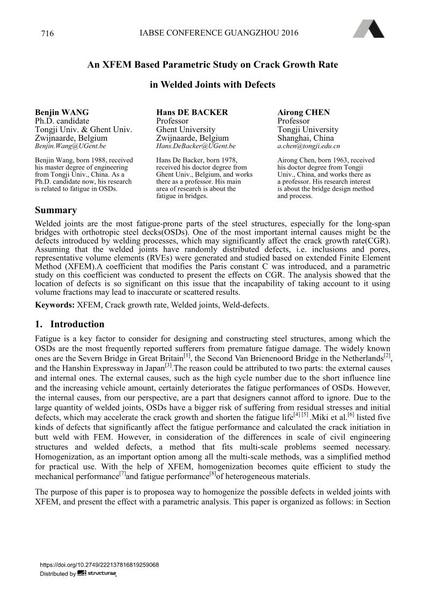An XFEM Based Parametric Study on Crack Growth Rate in Welded Joints with Defects

|
|
|||||||||||
Bibliografische Angaben
| Autor(en): |
Benjin Wang
Hans De Backer Airong Chen |
||||
|---|---|---|---|---|---|
| Medium: | Tagungsbeitrag | ||||
| Sprache(n): | Englisch | ||||
| Tagung: | IABSE Conference: Bridges and Structures Sustainability - Seeking Intelligent Solutions, Guangzhou, China, 8-11 May 2016 | ||||
| Veröffentlicht in: | IABSE Conference, Guangzhou, China, 8 – 11 May 2016 | ||||
|
|||||
| Seite(n): | 716-723 | ||||
| Anzahl der Seiten (im PDF): | 8 | ||||
| Jahr: | 2016 | ||||
| DOI: | 10.2749/222137816819259068 | ||||
| Abstrakt: |
Welded joints are the most fatigue-prone parts of the steel structures, especially for the long-span bridges with orthotropic steel decks(OSDs). One of the most important internal causes might be the defects introduced by welding processes, which may significantly affect the crack growth rate(CGR). Assuming that the welded joints have randomly distributed defects, i.e. inclusions and pores, representative volume elements (RVEs) were generated and studied based on extended Finite Element Method (XFEM).A coefficient that modifies the Paris constant C was introduced, and a parametric study on this coefficient was conducted to present the effects on CGR. The analysis showed that the location of defects is so significant on this issue that the incapability of taking account to it using volume fractions may lead to inaccurate or scattered results. |
||||
